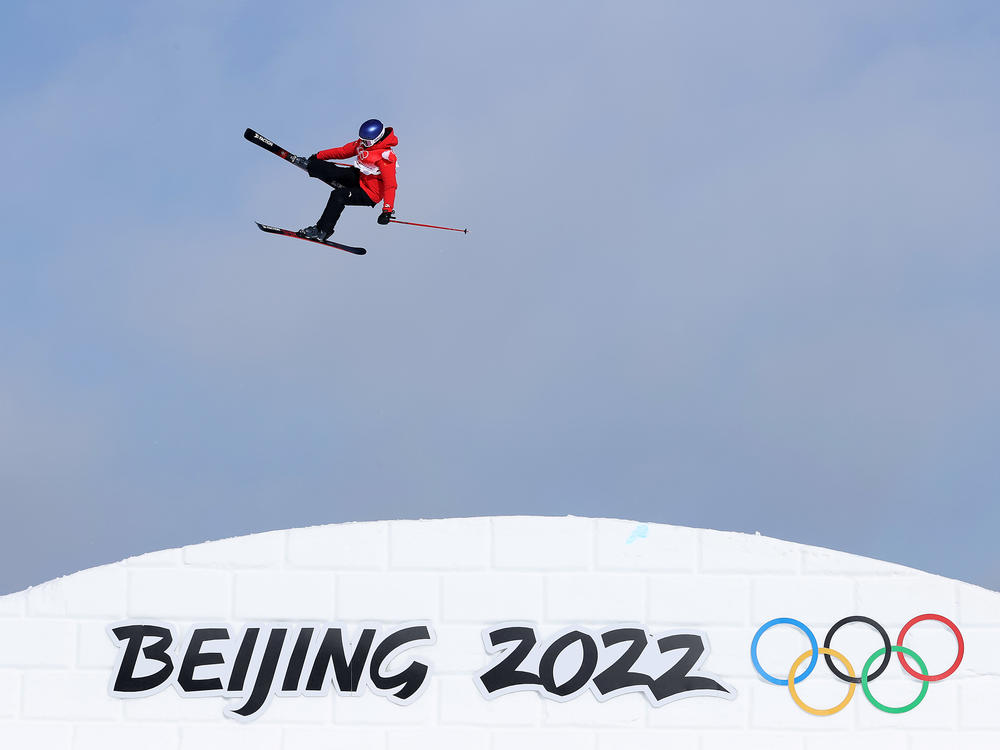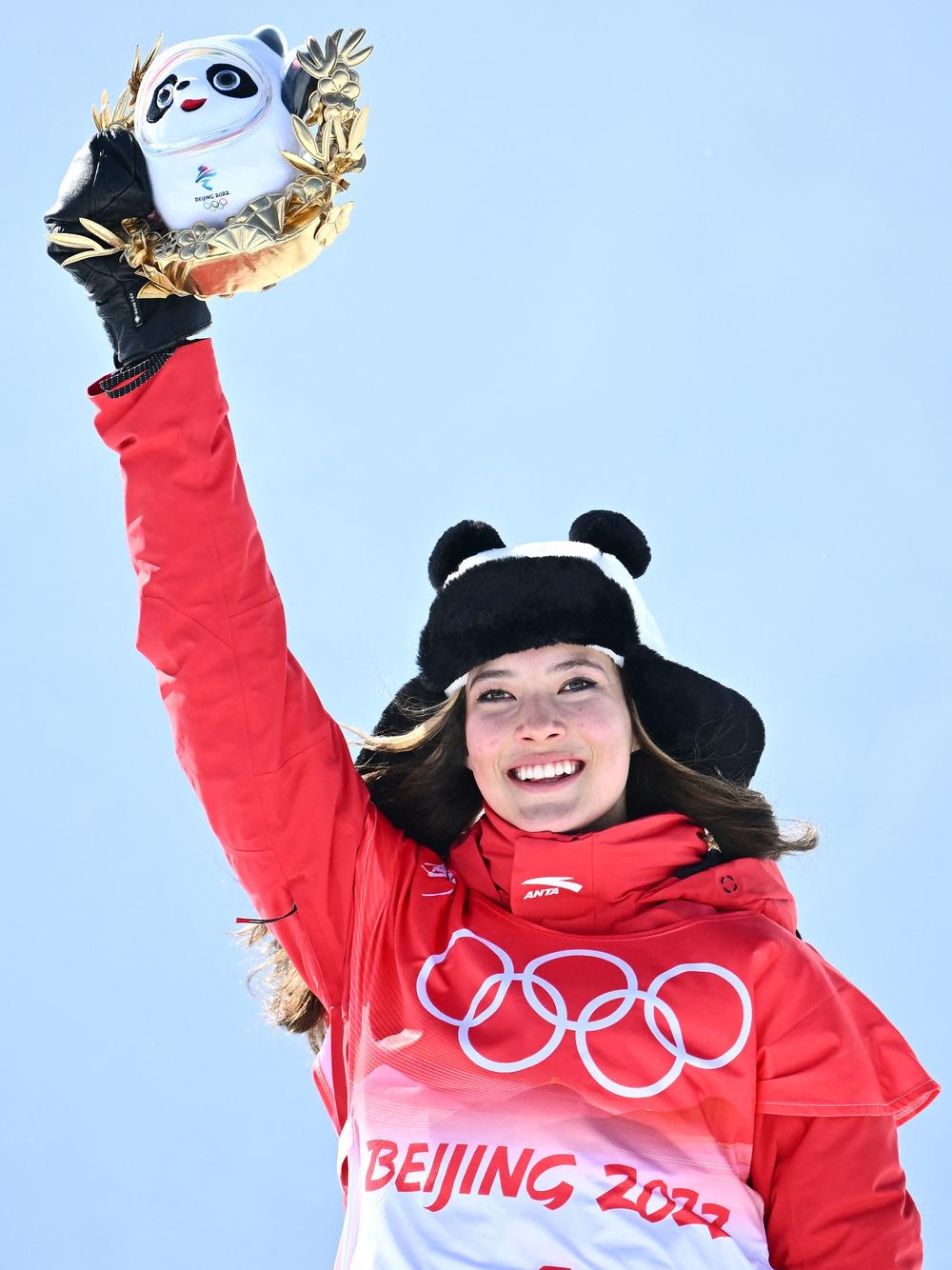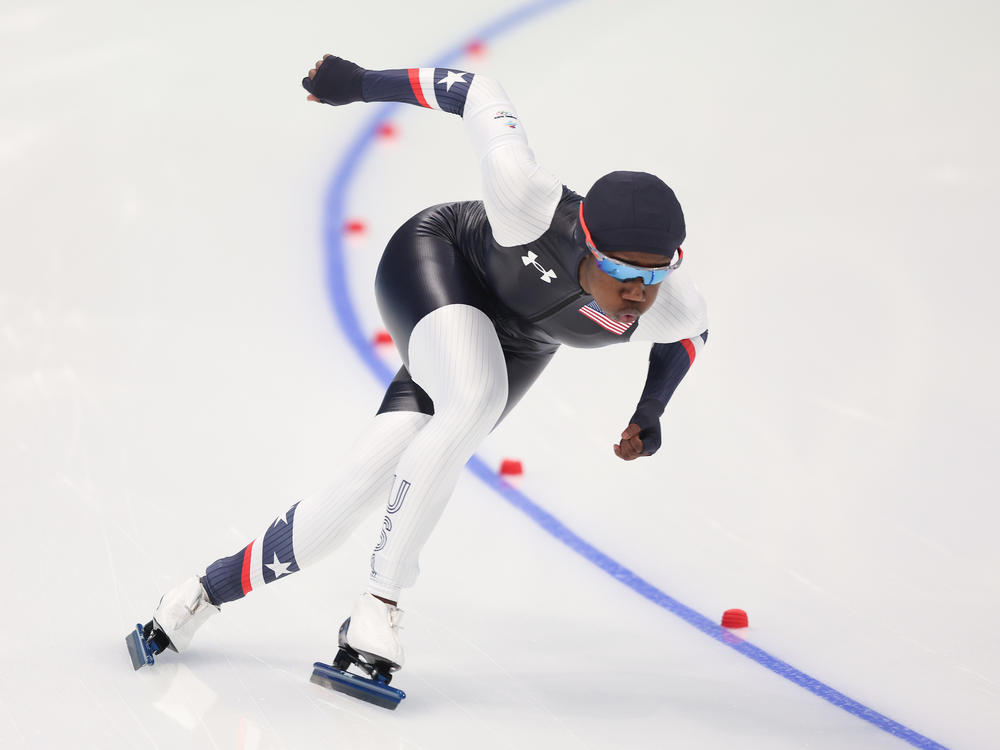Section Branding
Header Content
Women are the stars (and the victims) of the Beijing Olympics
Primary Content
BEIJING — When Eileen Gu, the freestyle skier from California who competes for China, stepped to the microphone after winning two gold medals and a silver, she was introduced as "the princess" of the Beijing Games.
The Chinese media has dubbed Gu the 'snow princess.' The 18-year-old is a remarkable athlete — spinning and twisting through the air above the halfpipe.
She's also the breakout star of these Winter Olympics, dominating news coverage inside China and emerging as an international sports brand.
"Huge honor to be the first free skier to podium in three events as a woman," Gu told reporters at the packed news conference. "It also makes me very hopeful about what the next generation can accomplish."
This is the kind of story Olympic officials love to highlight. Women have made enormous gains from the first Winter Games a century ago when only a handful of women competed.
Nearly half of the athletes in Beijing are women
IOC spokesman Mark Adams says gender balance is now nearly equal. "We have a record number — 45.4% women — competing [in Beijing]," he said.
That gradual evolution reflects work by international sports officials who added a new women-only event this year, the monobob sled competition, as well as more mixed events where men and women compete together.
"It sends a signal from the IOC [International Olympic Committee] to the national Olympic committees that they need to build up the capacity of their women teams and invest in their women's teams, their women's athletes," Adams said.
The IOC has also gradually shifted its approach to broadcasting the Games. All the television images from Beijing are filmed by the IOC's own in-house operation known as the Olympic Broadcasting Services. That footage is then distributed to networks that pay like NBC in the U.S.
The OBS has faced criticism in the past for sexualizing female athletes but the organization's head Yiannis Exarchos says they've gotten better at showing women in ways not tilted by gender.
"It's not about who is beautiful or attractive," Exarchos said. "It's about portraying huge athletes whether they are men or women."
Who holds the power in international sport?
But while participation and representation of women at the Olympics have improved, critics point out there's a dark side to how women are treated at the Games.
Women have fewer events, which means fewer chances to medal. They typically earn less money. There are also far fewer women coaches and top sports executives.
This lack of power was highlighted in Beijing by the case of Kamila Valieva, the 15-year-old Russian figure skater who found herself at the center of an international doping scandal.
The head of the IOC, Thomas Bach, acknowledged that Valieva appeared incapable of making decisions about her own fate.
"Maybe she would have preferred to just leave the ice and just have this story behind her," he said.
Other women figure skaters reacted to Valieva's case by calling for more protections for young women and girls in their sport.
"It is super important to ... push the boundaries," Gu says
Gu, the star skier, said this week she believes progress is needed in other sports as well.
"Extreme sports we all know are heavily dominated by men and it has not had the kind of representation and sporting equity that it should," Gu said.
"I think that as a young biracial woman, it is super important to ... push the boundaries. That's what paves the paths for the next generation of girls."
Gu said she's made the decision to focus more of her time away from skiing, writing a book and enrolling at Stanford University.
One footnote about gender balance at these Games.
While women compete in fewer events than men, the majority of U.S. gold medals at these Winter Olympics have been won by American women, in events where they competed alone or in mixed sports with male partners.
Copyright 2022 NPR. To see more, visit https://www.npr.org.



